前回の論文記事で紹介した研究「An Anatomical Study of the Anterosuperior Capsular Attachment Site on the Acetabulum(股関節包の解剖学的研究に基づく腸大腿靭帯に関する新しい知見)」について、全文翻訳したので記事に残します。
前回の記事は以下となり、abstract(要約)のみの翻訳でした。
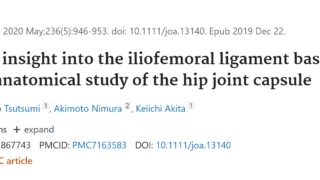
Conclusion(まとめ)にあたる文章では、「いわゆる腸骨大腿靭帯は、莢膜複合体を介して関節に筋力を伝達する機能を持つ、動的安定化装置とみなすことができる。このような解剖学的な知見は、股関節の安定化機構をより深く理解するためのものです。」と書かれていました。
腸骨大腿靭帯は股関節唇損傷修復術において、関節唇へのアプローチのため切開・縫合されるので術後3週間は同部にストレスを与えないよう、保護装具が処方されます。
また、abstractでは「組織学的な検討の結果、小殿筋腱と腸腰筋の深部骨膜は股関節包と連続していることがわかりました。腱・腱膜の接続形態、局所的な被膜の肥厚、組織学的連続性から、腸大腿靭帯の横方向と下方向の部分が関節被膜であり、それぞれ小殿筋腱と腸腰筋の深部被膜との接続に従って繊維が配置されていた。」と書かれていました。
この解剖学的事実より、股関節唇損傷修復術で関節包を包縮したり、関節唇を修復するために寛骨臼縁を露出し,スーチャーアンカーを挿入することの影響がないはずがないと想像できます。
そのため、今回はその論文を深堀りしたく全文翻訳しました🤓股関節唇損傷修復術後のリハビリや競技復帰に関心のある方の参考になると思います。
全文は以下のURLよりfreeで確認できます↓
Author information Article notes Copyright and License information Disclaimer
New insight into the iliofemoral ligament based on the anatomical study of the hip joint capsule
Masahiro Tsutsumi, 1 Akimoto Nimura, 2 and Keiichi Akita 1
2 and Keiichi Akita 1
Introduction
The iliofemoral ligament plays a key role in hip joint stability. The origin of the iliofemoral ligament is the same as that of the capsular attachment inferior to the anterior inferior iliac spine, and that capsular attachment is highly adaptive to mechanical stress, on the basis of its osseous impression, attachment width and histological features (Tsutsumi et al. 2019b). Distally, the iliofemoral ligament comprises two parts: the transverse part, which extends to a tubercle of the femur at the superolateral end of the intertrochanteric line, and the descending part, which extends to the inferomedial end of the intertrochanteric line (Schäfer & Thane, 1894; Neumann, 2016).
大腿腸骨靭帯は股関節の安定性に重要な役割を担っている。腸大腿靭帯の起源は前下腸骨棘より下方にある被膜付着部と同じであり、その被膜付着部は骨格印象、付着幅、組織学的特徴から、力学的ストレスに対して高い適応性を持っている(Tsutsumi et al.) 腸大腿靭帯は遠位では、大腿骨転子間線の上外側端の結節まで伸びる横断部と、転子間線の内側端まで伸びる下降部からなる(Schäfer & Thane, 1894; Neumann, 2016)。
According to previous reports, the gluteus minimus and the iliopsoas are located immediately superficial to the anterosuperior region of the joint capsule, and the tendon and deep aponeurosis are partly connected to the joint capsule (Ward et al. 2000; Walters et al. 2001; Tsutsumi et al. 2019b). However, the relationships between the iliofemoral ligament and the tendon and deep aponeuroses remain unclear because of a lack of knowledge of the precise location of the connections between the joint capsule and the tendons and deep aponeuroses. The precise location of the connection may clarify whether the iliofemoral ligament could be regarded as the dynamic stabilizer with the ability to transmit muscular power to the joint via the capsular complex.
これまでの報告によると,小殿筋と腸腰筋は関節包の前上方領域のすぐ表側に位置し,腱と深部骨膜は一部関節包とつながっている(Wardら2000;Waltersら2001;Tsutsumiら2019b).しかし、関節包と腱や深層骨膜の正確な接続位置がわかっていないため、腸大腿靭帯と腱や深層骨膜の関係は不明なままである。大腿腸骨靭帯は、関節包を介して筋力を関節に伝達する機能を持つ動的安定化因子と見なすことができるかどうかは、その正確な接続位置によって明らかになると思われる。
In the present study, we investigated the morphological features of the connections between the anterosuperior region of the hip joint capsule and the tendon and deep aponeurosis of the gluteus minimus and iliopsoas, based on macroscopic findings, analysis of the local thickness, and histological features. We hypothesized that the tendon and deep aponeurosis of the gluteus minimus and iliopsoas were connected to the part of the joint capsule which was identical to the iliofemoral ligament.
本研究では,股関節包の前上方領域と小殿筋および腸腰筋の腱および深層骨膜との接続部の形態的特徴について,巨視的所見,局所厚さの解析,組織学的特徴から検討した。その結果、小殿筋と腸腰筋の腱と深層筋は、腸大腿靭帯と同じ関節包の部分に結合していると考えられた。
Materials and methods
Cadaveric specimen preparations
Fifteen hips from nine Japanese cadavers (five males; four females; mean age at death 76.7 years) that were donated to our Department of Anatomy were used in this study. The study design was approved by the Ethics Committee at our institution.
死体標本の準備
本研究では、当院解剖学教室に寄贈された日本人死体9体(男性5体、女性4体、死亡時平均年齢76.7歳)から得られた15個の股関節を使用した。この研究計画は、当施設の倫理委員会の承認を得ている。
All cadaver specimens were fixed in 8% formalin and preserved in 30% ethanol. During dissection of the hip joint capsule and the pericapsular muscles, the skin and subcutaneous tissues were removed. In one specimen, cancer tissue infiltrating the pericapsular muscles was identified macroscopically and excluded. Of the remaining 14 hips, 10 hips and four hips were randomly assigned to macroscopic analysis and histological analysis, respectively.
すべての死体標本は8%ホルマリンで固定され、30%エタノールで保存された。股関節包と股関節周囲筋を剥離する際に,皮膚と皮下組織を除去した.1標本では、被殻周囲筋に浸潤した癌組織が肉眼的に確認され、除外された。残りの14関節のうち、10関節を肉眼解析に、4関節を組織学的解析に、それぞれ無作為に割り付けた。
Macroscopic analysis: outer appearance of the hip joint capsule
During the macroscopic analysis of 10 hips, the pericapsular muscles were carefully reflected from both the anterior and posterior aspects to expose the outer surface of the joint capsule (Fig. (Fig.1A–C1A–C shows the anterior aspect; Fig. Fig.1D–F1D–F shows the posterior aspect). First, the surface of the pericapsular muscles including the iliopsoas, gluteus minimus, rectus femoris, gemelli superior, gemelli inferior, obturator internus and obturator externus were exposed (Fig. (Fig.1A1A and and1).1). Second, these pericapsular muscles, except the rectus femoris, were detached from the pelvic bone and reflected distally, and the rectus femoris was reflected proximally (Fig. (Fig.1B1B and and1).1). During reflection of each muscle, the deep aponeuroses were also identified to check whether or not they connected to the joint capsule. Third, we removed the deep aponeurosis that did not connect to the outer surface of the joint capsule, and also removed the rectus femoris to expose the proximal attachment of the joint capsule (Fig. (Fig.1C1C and and1).1). Finally, the joint capsule was detached from the acetabular margin and removed from the pelvic bone. To expose and observe the outer appearance of the joint capsule, we checked whether the pericapsular muscles connected to the joint capsule or not and carefully removed them.
巨視的解析:股関節の被膜の外見
10股関節の肉眼解析では、関節包の外面を露出させるために、前方および後方の両側から関節包周囲の筋肉を注意深く反射させた(図1A-C1A-Cは前方の側面、図1D-F1D-Fは前方の側面)。Fig.1D-F1D-Fは後面を示す)。まず、腸腰筋、小殿筋、大腿直筋、上殿筋、下殿筋、内殿筋、外殿筋などの被膜周囲筋の表面を露出させた(図1A1A・アンド1).1)。次に、大腿直筋を除くこれらの骨膜周囲筋を骨盤骨から剥離し遠位に反射させ、大腿直筋を近位に反射させた(図(図1B1Bとand1).1)。各筋の反射の際、深部アポニューレも確認し、関節包に接続しているかどうかを確認した。第三に、関節包の外表面に接続しない深部アポニューロスを除去し、さらに大腿直筋を除去して関節包の近位付着部を露出させた(図1C1Cとand1).1)。最後に、関節包を臼蓋縁から剥離し、骨盤骨から除去した。関節包の外形を露出し観察するため、関節包周囲の筋肉が関節包とつながっているかどうかを確認し、慎重に除去した。
Figureは以下のURLよりご確認ください。
Thickness distribution of the whole hip joint capsule on microcomputed tomography
After macroscopic analysis, the thickness distribution of the whole joint capsule was analyzed by using the previously verified method as follows (Tsutsumi et al. 2019a). The joint capsule, detached from the femur, was expanded flatly and examined using microcomputed tomography (micro‐CT; inspeXio smx‐100ct; SHIMADZU, Kyoto, Japan) with a 200‐μm resolution. The obtained images of the joint capsule were re‐sliced to be horizontal to the sheet of the joint capsule, and slice thickness was changed to 100 μm with use of OsiriX (Pixmeo, Benex, Switzerland). Re‐sliced image data were transferred to ImageJ software (version 1.52; National Institutes of Health, Bethesda, MD, USA) for visualization of the thickness distribution. First, binalization for all sequential frames was extracted from input micro‐CT images by specifying a CT intensity value. Second, an image stack was projected along the axis perpendicular to the image plane (the hip joint capsule thickness). The projection created a real image that was the sum of the binary slices in the stack. The joint capsule thickness was calculated according to slice unit length and number. On the basis of the calculated thickness, we compared the thicknesses of the two regions, the whole joint capsule and its anterosuperior region, which was defined by the bony attachment such as the inferior area of the anterior inferior iliac spine, superolateral and inferomedial end of the intertrochanteric line. Finally, a color look‐up table was created to demonstrate the specific joint capsule location.
マイクロコンピュータ断層撮影における股関節全体の関節包の厚み分布
巨視的な解析の後、先に検証した方法を用いて、以下のように関節包全体の厚み分布を解析した(Tsutsumi et al.2019a)。大腿骨から剥離した関節包を平らに展開し、マイクロコンピュータトモグラフィー(micro-CT; inspeXio smx-100ct; SHIMADZU, Kyoto, Japan)を用いて解像度200μmで検査した。得られた関節包の画像は,関節包のシートに対して水平になるように再スライスし,OsiriX(Pixmeo, Benex, Switzerland)を用いてスライス厚を100μmに変更した.再スライスした画像データをImageJソフトウェア(バージョン1.52;National Institutes of Health, Bethesda, MD, USA)に転送し、厚み分布の可視化を行った。まず,入力されたマイクロCT画像からCT強度値を指定して,連続するすべてのフレームのバイナリ化を抽出した.次に,画像平面(股関節の被膜厚)に直交する軸に沿って画像スタックを投影した.この投影により,スタック内の2値スライスの総和である実画像が生成される.関節包の厚さは、スライス単位の長さと数によって計算された。算出された厚みをもとに、関節包全体とその前上方領域(前下腸骨棘の下側領域、転子間線の上外側および内側端などの骨性付着部で定義)の2領域の厚みを比較検討した。最後に、特定の関節包の位置を示すために、カラールックアップテーブルが作成された。
Histological analysis of the cross‐section of the hip joint capsule
We performed histological examinations of the layer structure of the joint capsule in the four randomly selected hips. At first, the bony configuration of the pelvic bone and femur was examined using micro‐CT with 200‐μm resolution, and the three‐dimensional images were reconstructed using application software (VG Studio Max 2.0; Heidelberg, Germany). Then, we harvested en bloc specimens using a diamond saw in the following two small regions: the proximal cross‐section horizontal to the acetabular margin and the distal cross‐section horizontal to the intertrochanteric line of the femur. These regions were identified by three‐dimensional conformations of the micro‐CT images. After fixation, these en bloc specimens were dehydrated and embedded in paraffin solution. Subsequently, the blocks were serially sectioned (thickness 5 μm) and stained using Masson’s trichrome staining protocol.
股関節の関節包の断面の組織学的分析
無作為に選んだ4つの股関節について、関節包の層構造を組織学的に検討した。まず、骨盤骨と大腿骨の骨形態を200μm解像度のマイクロCTで観察し、アプリケーションソフト(VG Studio Max 2.0; Heidelberg, Germany)を用いて3次元画像を再構成した。次に,臼蓋縁に水平な近位側断面と大腿骨転子間線に水平な遠位側断面の2つの小領域をダイヤモンドソーで一括採 取した。これらの領域は、マイクロCT画像の3次元的なコンフォメーションによって特定された。固定後,これらのen bloc標本を脱水し,パラフィン溶液に包埋した.その後,ブロックを連続的に切り出し(厚さ5μm),Massonのトリクローム染色プロトコルを用いて染色を行った.
Statistical analyses
Statistical tests were performed using JMP 14.0 (SAS Institute Inc., Cary, NC, USA). Statistical comparisons of the thicknesses of the hip joint capsules were performed using a paired t‐test, and the significance level was set at P < 0.001. We did not adjust the hip joint capsule thickness measurements for the size of the proximal femur or acetabulum. Data are provided as mean ± SD.
統計解析
JMP 14.0 (SAS Institute Inc., Cary, NC, USA)を用いて統計検定を行った。股関節被膜の厚さの統計的比較はpaired t-testで行い,有意水準はP<0.001とした.股関節包の厚さの測定値には、大腿骨近位部や寛骨臼の大きさによる調整は行わなかった。データは平均値±SDで示した。
Results
Outer appearance of the hip joint capsule
On the anterior aspect of the joint capsule, the deep aponeurosis of the gluteus minimus, the iliopsoas, and the proximal aponeurosis of the rectus femoris were connected to the capsular surface (Fig. (Fig.2A).2A). The gluteus minimus was adjoined to the joint capsule via its deep aponeurosis. To clarify the precise relationships between the gluteus minimus and the joint capsule, we removed the muscular portion of the gluteus minimus (Fig. (Fig.2B).2B). The deep aponeurosis of the gluteus minimus merged into the gluteus minimus tendon, which inserted into the anterior facet of the greater trochanter. By detaching the insertion of the gluteus minimus tendon and reflecting it superiorly (Fig. (Fig.2C),2C), we revealed that the joint capsule also merged into the gluteus minimus tendon and cut the base of this connection (Fig. (Fig.2D).2D). The lateral end of this connection was adjoined with the tubercle of the femur at the superolateral end of the intertrochanteric line. In contrast, the iliopsoas could be completely detached from its deep aponeurosis and the lesser trochanter. The inferomedial end of the deep aponeurosis of the iliopsoas, at its anterior border, corresponded with the inferomedial end of the intertrochanteric line.
股関節の関節包の外観
関節包の前面には小殿筋の深層筋、腸腰筋、大腿直筋の近位筋が関節包表面に接していた(図(2A).2A)。小殿筋はその深部骨膜を介して関節包に連結されていた。小殿筋と関節包の正確な関係を明らかにするために、小殿筋の筋肉部分を切除した(図(Fig.2B).2B)。小殿筋の深部骨膜は小殿筋腱に合流し、大転子前面に挿入される。小殿筋腱の挿入部を剥離し上方に反射させると(図(2C),2C)、関節包も小殿筋腱に合流することがわかり、この接続部の基部を切断した(図(2D),2D)。この接続部の外側端は、転子間線の超外側端で大腿骨の結節と隣接していた。一方,腸腰筋はその深部骨膜と小転子から完全に切り離すことができた。腸骨筋の深部骨膜の前縁の内側端は、転子間線の内側端と一致する。
On the posterior aspect of the joint capsule, the deep aponeuroses of the gluteus minimus, the complex of the obturator internus and gemelli superior and inferior, and the obturator externus were also connected to its surface (Fig. (Fig.3A).3A). However, the gemelli superior and inferior and obturator internus and externus could be completely detached from the trochanteric fossa (Fig. (Fig.33B).
また、関節包の後面では、小殿筋の深部骨膜、内転筋と上・下転筋の複合体、外転筋がその表面につながっていた(図(Fig.3A).3A)。しかし,上・下腿骨,内転筋・外転筋は完全に転子窩から剥離することができた(図(Fig.33B)).
Appearance of the hip joint capsule and its thickness distribution
To observe the whole appearance of the joint capsule, we completely detached it from the femur (Fig. (Fig.4A).4A). From the inner aspect of the joint capsule, its anterosuperior region, which was surrounded by the inferior area of the anterior inferior iliac spine and the intertrochanteric line (between its superolateral and inferomedial end), was identified (Fig. (Fig.4B).4B). The zona orbicularis joined posteriorly to this anterosuperior region. From the outer aspect of the joint capsule, the borders among the deep aponeuroses connecting to the joint capsule were clearly identified (Fig. (Fig.4C).4C). Based on the thickness distribution analysis using micro‐CT, these borders were identified as relatively thick regions (Fig. (Fig.4D).4D). At the anterosuperior region of the joint capsule, two regions, the base of the connection to the gluteus minimus tendon and the anterior border of the deep aponeurosis of the iliopsoas, were relatively thick. The mean thickness of the anterosuperior region including these two thick regions was significantly greater than that of the whole joint capsule between the distal margin of the labrum and the proximal margin of the femoral attachment (P < 0.001; Table Table11).
股関節の関節包の外観とその厚み分布
関節包の全体像を観察するために、関節包を大腿骨から完全に剥離した(図(Fig.4A).4A)。関節包の内面から、前下腸骨棘の下側領域と転子間線(その上外側と下内側の端の間)に囲まれたその前上側領域を確認した(図(Fig.4B).4B)。この前上方領域には、後方から眼窩筋が接合している。関節包の外側からは、関節包につながる深部骨膜間の境界が明瞭に確認できた(図(Fig.4C).4C)。マイクロCTによる厚み分布解析の結果、これらの境界は比較的厚い領域であることが確認された(図(Fig.4D).4D)。関節包の前上方部では、小殿筋腱との接続基部と腸腰筋深部腱膜の前縁の2つの領域が比較的厚いことが確認された。これら2つの厚い領域を含む前上方領域の平均厚さは、関節唇遠位縁と大腿骨付着部近位縁の間の関節包全体の厚さより有意に大きかった(P < 0.001;Table 表11)。
Histological features of the cross‐section of the hip joint capsule
We performed a histological analysis of the cross‐section of the joint capsule at its proximal and distal portions, which were parallel to the acetabular margin and intertrochanteric line, respectively (Fig. (Fig.5A).5A). At the proximal joint capsule, the deep aponeuroses of the rectus femoris and iliopsoas were continuous with the joint capsule (Fig. (Fig.5B),5B), and these structures were composed of a dense connective tissue (Fig. (Fig.5C).5C). Additionally, the iliocapsularis was surrounded by and connected to the deep aponeurosis of the iliopsoas. At the distal joint capsule, the deep aponeurosis of the iliopsoas was also continuous with the joint capsule (Fig. (Fig.5D)5D) and composed of a dense connective tissue (Fig. (Fig.5E).5E). The gluteus minimus tendon could not be separated from the joint capsule.
股関節の関節包の断面の組織学的特徴
臼蓋縁と転子間線にそれぞれ平行な近位部と遠位部の関節包の断面を組織学的に解析した(図(Fig.5A).5A)。関節包近位部では、大腿直筋と腸腰筋の深部骨膜が関節包と連続し(図(Fig.5B).5B)、これらの構造は密な結合組織で構成されていた(図(Fig.5C).5C)。さらに、腸骨筋は腸腰筋の深部骨膜に囲まれ、連結していた。遠位関節包では、腸腰筋の深部腱膜も関節包と連続し(図(5D)5D)、密な結合組織で構成されていた(図(5E).5E)。小殿筋腱は関節包から切り離すことができなかった。
Discussion
The present study revealed that the gluteus minimus tendon was connected to the hip joint capsule, and that the lateral end of the base of this connection was adjoined with the tubercle of the femur at the superolateral end of the intertrochanteric line. Furthermore, the deep aponeurosis of the iliopsoas was also connected to the joint capsule, and the inferomedial end of its anterior border corresponded with the inferomedial end of the intertrochanteric line. Capsular thickening was observed at the base of the connection to the gluteus minimus tendon and at the anterior border of the deep aponeurosis of the iliopsoas. The mean thickness of the anterosuperior region of the joint capsule including these two regions was significantly greater than that of the whole joint capsule. A histological study showed that the gluteus minimus tendon and deep aponeurosis of the iliopsoas were continuous with the joint capsule.
本研究により、小殿筋腱は股関節包に連結しており、その基部の外側端は大腿骨転子間線の上外側端にある結節と隣接していることが明らかとなった。さらに腸腰筋の深部骨膜も関節包に連結しており、その前縁の内側端は転子間線の内側端と一致していた。関節包の肥厚は小殿筋腱との接続基部と腸骨深層筋の前縁に認められた。この2つの部位を含む関節包の前上方領域の平均厚さは、関節包全体の厚さより有意に大きかった。組織学的検討の結果,小殿筋腱と腸腰筋深部骨膜は関節包と連続していることが確認された.
Previous studies have focused on the relationship between the gluteus minimus and the joint capsule. According to Walters et al. (2001), the gluteus minimus tendon was attached to the joint capsule. Tsutsumi et al. (2019b) showed that the deep aponeurosis of the gluteus minimus was connected to the joint capsule. The present study revealed that the deep aponeurosis of the gluteus minimus was connected to the joint capsule and that this aponeurosis–capsule complex merged into the gluteus minimus tendon. Moreover, some anatomical textbooks have described the gluteus minimus tendon as being connected to the transverse part of the iliofemoral ligament (Henle, 1855; Fick, 1904). Our study showed that the lateral end of the base of the connection to the gluteus minimus tendon was adjoined with the tubercle at the superolateral end of the intertrochanteric line, namely, the insertion of the transverse part of the iliofemoral ligament (Schäfer & Thane, 1894; Neumann, 2016). Therefore, we inferred that the transverse part of the iliofemoral ligament was the joint capsule itself, with fibers that were arranged according to the connection with the gluteus minimus tendon.
これまでの研究では、小殿筋と関節包の関係に焦点が当てられてきた。Waltersら(2001)によると、小殿筋腱は関節包に付着していた。Tsutsumiら(2019b)は,小殿筋の深部骨膜が関節包に連結していることを示した。本研究では,小殿筋の深部骨膜が関節包に連結しており,この骨膜-関節包複合体が小殿筋腱に合流することを明らかにした。さらに、一部の解剖学の教科書では、小殿筋腱は腸大腿靭帯の横部分に連結していると記述されている(Henle, 1855; Fick, 1904)。我々の研究では、小殿筋腱との接続基部の外側端は、腸骨間膜線の上外側端の結節、すなわち腸骨大腿靭帯の横部分の挿入部と隣接していた(Schäfer & Thane, 1894; Neumann, 2016)。したがって,腸大腿靭帯横部は関節包そのものであり,小殿筋腱との接続に応じた繊維が配置されていると推察された。
The iliocapsularis was attached to the joint capsule as described by Ward et al. (2000). The present study showed that the deep aponeurosis of the iliopsoas was connected to the anterosuperior region of the joint capsule. Since the iliocapsularis occupied the deepest portion of the iliopsoas, we considered that the muscular portion of the iliocapsularis was attached to the joint capsule via the deep aponeurosis of the iliopsoas. Henle (1855) stated that a part of the iliacus, which is the same as the iliocapsularis, arose from the descending part of the iliofemoral ligament. The present study showed that the inferomedial end of the anterior border of its deep aponeurosis corresponded with the inferomedial end of the intertrochanteric line, namely, the insertion of the descending part of the iliofemoral ligament (Neumann, 2016). Based on the description by Henle (1855) and the present study, the descending part of the iliofemoral ligament was the joint capsule itself with fibers that were arranged according to the connection with the deep aponeurosis of the iliopsoas.
腸骨筋はWardら(2000)が述べたように、関節包に付着していた。本研究では,腸骨筋の深部骨膜は関節包の前上方領域に連結していることが示された.腸骨筋は腸腰筋の最深部を占めていることから、腸骨筋の筋部は腸骨筋の深部腱膜を介して関節包に付着していると考えた。Henle(1855)は,腸骨筋と同じ腸骨筋の一部が腸骨大腿靭帯の下行部から生じていると述べている.本研究では,その深部骨膜の前縁の内側端は,腸骨間線の内側端,すなわち腸骨大腿靭帯の下行部分の挿入部に相当することが示された(Neumann, 2016)。Henle(1855)の記述と本研究から、腸大腿靭帯の下行部分は、腸腰筋の深部骨膜との接続に応じた繊維が配置された関節包そのものであると考えられる。
Few studies have measured the thickness of the hip joint capsule. Philippon et al. (2015) stated that the joint capsule was relatively thick at the region that corresponded to the location of the iliofemoral ligament. However, in their study, the thicknesses were measured at some points of the joint capsule, but not on the whole joint capsule. Using micro‐CT, we were able to show that, based on the thickness distribution of the whole joint capsule, the anterosuperior region, which was defined by the proximal and distal attachments of the iliofemoral ligament, was significantly thicker than the whole joint capsule. Furthermore, the anterosuperior region of the joint capsule was relatively thick at two regions, the base of the connection to the gluteus minimus tendon and the anterior border of the deep aponeurosis of the iliopsoas. Because the capsular ligament was defined as local thickening of the fibrous joint capsule (Adams, 2016), these two regions could be regarded as the capsular ligament owing to their thickness.
股関節の関節包の厚さを測定した研究はほとんどない。Philipponら(2015)は、腸腰筋靭帯の位置に相当する部位では、関節包が比較的厚いと述べている。しかし、彼らの研究では、関節包の一部の箇所で厚みを測定しており、関節包全体では測定していませんでした。マイクロCTを用いて、関節包全体の厚み分布から、腸大腿靭帯の近位・遠位付着部で規定される前上方領域が、関節包全体よりも有意に厚いことを示すことができました。さらに、関節包の前上方領域は、小殿筋腱との接続基部と腸腰筋の深層骨膜の前縁の2つの領域で比較的厚くなっていた。莢膜靭帯は線維性関節包の局所的肥厚と定義されているため(Adams, 2016),この2つの部位はその厚みから莢膜靭帯とみなすことができる.
Although the histological features of the joint capsule have been investigated on many planes, including the axial, coronal sagittal and axial oblique planes (Wagner et al., 2012), the layer structures of the joint capsule at the proximal and distal cross‐sections horizontal to the acetabular margin and intertrochanteric line have never been shown in previous studies. Regarding the histological connection between the pericapsular muscles and the joint capsule, Walters et al. (2001) only showed the connection between the gluteus minimus tendon and the joint capsule. We showed the layer structures of the joint capsule, which cannot be separated from the gluteus minimus tendon and the deep aponeurosis of the iliopsoas. Moreover, the capsular complex including the connecting structures comprised dense connective tissue, identical to the histological features of the ligament (Fawcett & Bloom, 1986; Wigley, 2016).
節包の組織学的特徴は、軸位面、冠状矢状面、軸位斜位面など多くの面で検討されているが(Wagnerら、2012)、臼蓋縁と転子間線に水平な近位・遠位断面における関節包の層構造はこれまでの研究で示されたことはない。また、関節包周囲の筋肉と関節包の組織学的な結合については、Waltersら(2001)が小殿筋腱と関節包の結合を示したのみであったが、我々は、小殿筋腱と関節包の結合を示した。我々は、小殿筋腱と腸腰筋の深部骨膜を切り離すことができない関節包の層構造を示した。さらに、連結構造を含む被膜複合体は、靭帯の組織学的特徴と同一の高密度結合組織で構成されていた(Fawcett & Bloom, 1986; Wigley, 2016)。
The present study is clinically relevant because it provides useful information regarding hip joint stability. It is generally thought that the iliofemoral ligament contributes to hip joint stability as the main static stabilizer (Myers et al. 2011; Walters et al. 2014; van Arkel et al. 2015a,2015b). Tsutsumi et al. (2019b) showed that the origin of the iliofemoral ligament was identical to that of the capsular attachment inferior to the anterior inferior iliac spine. We showed that the transverse and descending parts of the iliofemoral ligament were the joint capsules, with fibers arranged according to the connection with the gluteus minimus tendon and the deep aponeurosis of iliopsoas, respectively. Therefore, the so‐called iliofemoral ligament could be regarded as the dynamic stabilizer, able to transmit muscular power to the joint via the capsular complex. In other words, the iliofemoral ligament might be able to maintain its tension via the contraction force of the gluteus minimus and iliopsoas to some extent, even in hip positions in which the ligament is often considered to be becoming loose.
本研究は、股関節の安定性に関する有用な情報を提供するため、臨床的に意義がある。一般に、腸大腿靭帯は主要な静的安定化因子として股関節の安定性に寄与していると考えられている(Myersら2011; Waltersら2014; van Arkelら2015a,2015b)。Tsutsumiら(2019b)は、腸大腿靭帯の起始部が前下腸骨棘の下方にある被膜の付着部と同一であることを明らかにした。腸大腿靭帯の横方向と下方向の部分が関節包であり、それぞれ小殿筋腱と腸腰筋の深部骨膜との接続に従って繊維が配置されていることを示しました。したがって、いわゆる腸大腿靭帯は、莢膜複合体を介して関節に筋力を伝達することができる動的安定化装置とみなすことができる。つまり、大腿腸骨靭帯は、緩んでいると思われがちな股関節位においても、小殿筋と腸腰筋の収縮力を介して、ある程度その張力を維持することができる可能性がある。
This study had some limitations. First, it was a purely anatomical investigation and was limited to uninjured specimens, therefore, we cannot prove the mechanism of hip joint stability, and whether the iliofemoral ligament truly stabilizes the joint by transmitting muscle power to the joint was more an induction than a finding substantiated by the evidence of the study. Second, measurements were not adjusted for the overall size of the donor or related anatomical structures. Finally, we could not exclude the possibility that the advanced age of the donors affected our findings. Additional biomechanical studies or studies involving clinical case imaging are needed to validate our findings.
この研究にはいくつかの限界があった。第一に、純粋に解剖学的な調査であり、無傷の標本に限られるため、股関節の安定性のメカニズムを証明することはできず、腸腰筋靭帯が本当に筋力を関節に伝えることで関節を安定させているかどうかは、この研究の証拠によって立証された知見というよりは帰納的なものであったということである。第二に、測定値はドナーの全体的な大きさや関連する解剖学的構造について調整されていませんでした。最後に、ドナーの年齢が高いことが我々の発見に影響を与えた可能性を排除することができなかった。我々の所見を検証するために、追加の生体力学的研究または臨床例の画像診断を含む研究が必要である。
In conclusion, based on the morphology of the tendinous and aponeurotic connections, local capsular thickening and histological continuity, the transverse and descending parts of the iliofemoral ligament comprised the hip joint capsule itself, with fibers arranged according to the connection with the gluteus minimus tendon and the deep aponeurosis of iliopsoas, respectively. The so‐called iliofemoral ligament could therefore be regarded as the dynamic stabilizer. This anatomical knowledge provides a better understanding of the hip stabilization mechanism.
結論として、腱と腱膜の結合の形態、被膜の局所的肥厚、組織学的連続性から、腸大腿靭帯の横断部と下降部は股関節被膜そのものを構成し、繊維はそれぞれ小殿筋腱と腸腰筋の深部骨膜との結合に従って配列していた。したがって、いわゆる腸大腿靭帯は動的安定化因子とみなすことができる。このような解剖学的な知識は、股関節の安定化機構をより深く理解するためのものである。
Conflict of interest
None declared.
利益相反
特になし。
Acknowledgements
This study was supported by JSPS KAKENHI (grant number JP 19K18488) and JA Kyosai Research Institute (Agricultural Cooperative Insurance Research Institute).
謝辞
本研究は、日本学術振興会科研費(助成番号JP19K18488)およびJA共済連(農業協同組合保険研究所)の助成を受けて実施したものです。
Data Availability Statement
Research data are not shared.
データ利用許諾書
研究データは共有されません。



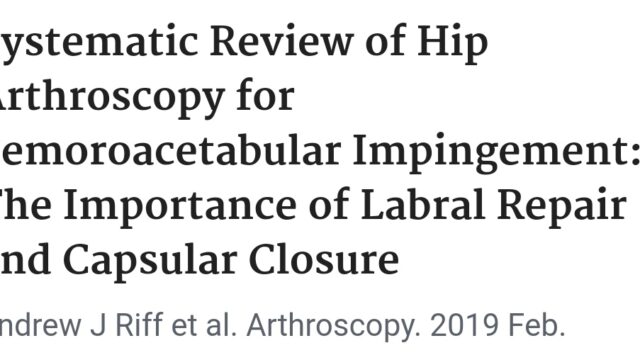

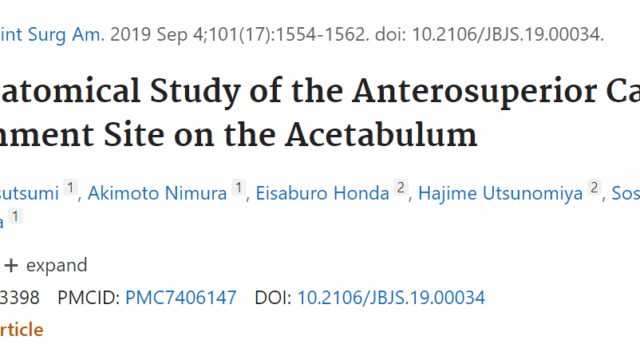
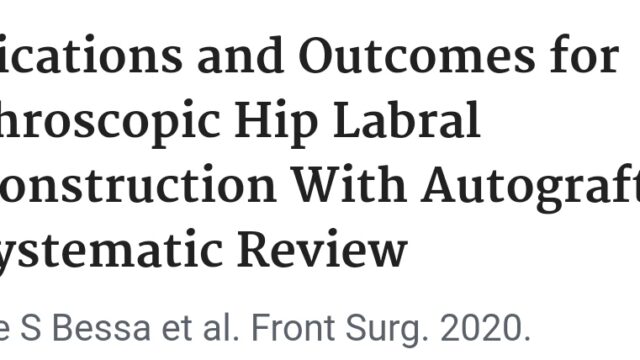
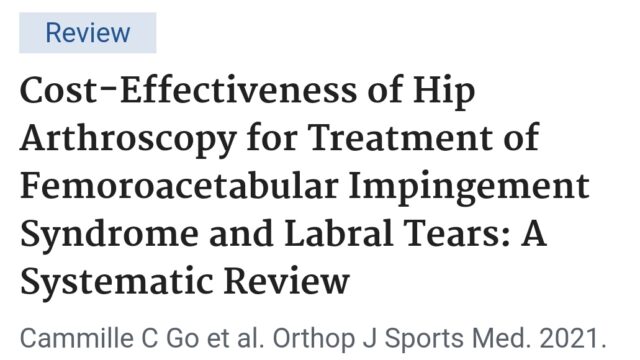
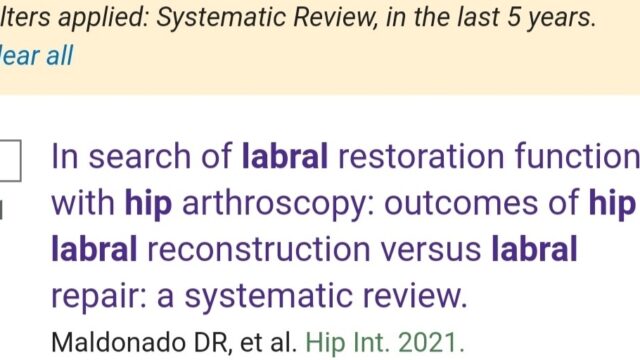
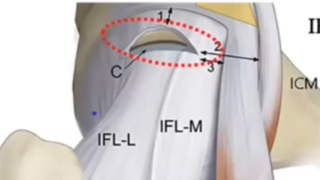




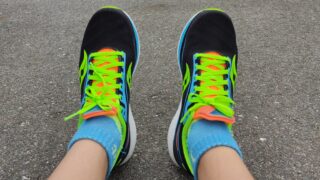

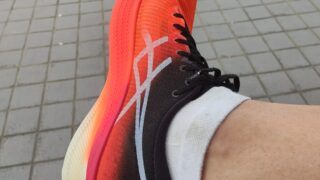
はじめまして。 とても興味をひかれました! ふだん改造ビーチサンダルやlun…
ありがとうございます。嬉しいです みちさんが保存療法でよくなることを願っています…
経過良好で安心しました^_^ やはりリハビリが大事なのですね。 術後の記事、…
お大事に下さい。こちらこそありがとうございました。
コメントありがとうございます。 心強いです。 金曜日に県内のスポーツ外来を受…